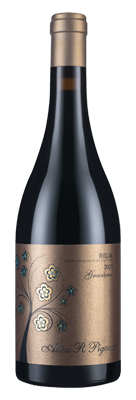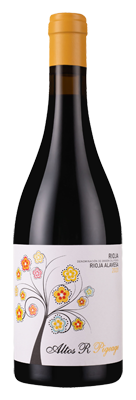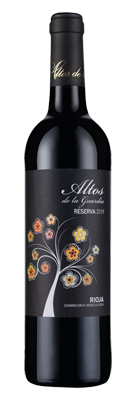Filter by
- An "expertly-made Hunter Shiraz" with "... most importantly, it is delicious. 94pts" (Halliday).$45.00 RRPfrom $42.99 when you mix 12+
- 93pt “Ripe, plush, weighty" (Halliday) Cab. Malbec from Hungerford Hill’s talented Bryan Currie.$50.00 RRPfrom $39.99 when you mix 12+
- A rare exclusive blend of Cabernet, Shiraz and Dolcetto from Aussie wine legend, Ben Glaetzer.$25.00 RRPfrom $22.99 when you mix 12+
- 93pt pure Mourvèdre (aka Mataro) from Rob Mack's Aphelion in McLaren Vale.$42.00 RRPfrom $42.00 when you mix 12+
- A limited parcel of gorgeous Shiraz fruit lies behind this rare RedHeads release.$36.00 RRPfrom $29.99 when you mix 12+
- $22.00 RRPfrom $14.99 when you mix 12+
- $55.00 RRPfrom $49.99 when you mix 12+
- Gorgeously rich Gold Reserva with intense berry fruit and mellow vanilla oak from the Rioja Alavesa$50.00 RRPfrom $44.99 when you mix 12+
- Ultra rare and hugely accoladed Graciano Rioja from Jean Marc Sauboua.$75.00 RRPfrom $64.99 when you mix 12+
- Delicious new vintage of the fine flagship, barrel-aged Shiraz from RedHeads in the Barossa Valley.$50.00 RRPfrom $50.00 when you mix 12+
- Multi-Gold-winning serious Grand Cru-style Rioja from Jean-Marc Sauboua. Sublime!$58.00 RRPfrom $49.99 when you mix 12+
- 16 Golds & high point scores up t0 96pts for Altos Pigeage from Jean-Marc’s superb Rioja estate$58.00 RRPfrom $49.99 when you mix 12+
- Magnificent Single Vineyard Shiraz from Elena Brooks, with 7 Golds, 95,96 & 97pt scores!$120.00 RRPfrom $110.00 when you mix 12+
- Two Golds, 96, 95 & 92pt iconic GSM from d'Arenberg.$78.00 RRPfrom $74.99 when you mix 12+
- Delicious, two-Gold latest release of RedHeads charcterful Aussie red with a cheeky nod to France$30.00 RRPfrom $21.99 when you mix 12+
- Two Golds already for this serious Rioja Reserva from Jean-Marc Sauboua's bodega in the sky.$48.00 RRPfrom $39.99 when you mix 12+
- Top-drawer, old-vine Reserva from a family estate – beautifully mature, mellow and complex$44.00 RRPfrom $34.99 when you mix 12+
Wine FAQs
What is full-bodied red wine?
Full-bodied red wines are known for their bold and robust characters. They typically have a high alcohol content – usually 13.5% and above – and intense, memorable flavours.
Some popular full-bodied reds include Cabernet Sauvignon, Malbec and Shiraz. These wines are typically known for their high tannin levels, which give them a rich texture and depth. This quality is sometimes described as velvety – a unique characteristic of full-bodied red wines.
Available in a variety of styles, full-bodied reds often have fruit flavours, such as cherries or plums. In warmer climates, they may have flavours of ripe black fruit such as blackcurrants and blackberries.
These wines also typically feature earthy and spicy notes, and occasionally a hint of oak if they have been aged in barrels. This adds further depth and complexity to the wine.
How is full-bodied red wine made?
Various factors can determine how full-bodied a red wine will be.
Certain grape varieties, such as Cabernet Sauvignon, Malbec and Shiraz, typically produce full-bodied wines, partly due to their higher sugar content, along with other factors such as winemaking technique. This leads to higher alcohol levels, resulting in a fuller, heavier wine.
The climate in which the grapes are grown also makes a difference – grapes grown in warm temperatures can contain more sugar as they ripen, leading to fuller-bodied wines.
Winemakers can also use several techniques. One method is to leave the grape juice with the skins and seeds for a longer time to take on more colour, flavour and body. They may also use higher temperatures during fermentation to extract more flavours and achieve a fuller body.
Finally, ageing the wine in oak barrels can add more structure and flavour. Depending on the type of oak used, the age of the barrel and how long the wine spends in it, additional flavours can include vanilla, toasted bread, caramel, spice, smoke or chocolate.
As well as allowing flavours to develop, oak barrels let in a small, carefully controlled amount of oxygen – this can also affect the wine's taste and texture.
What are the most popular full-bodied red wines?
Full-bodied red wines are known for their rich flavours and robust character. Here are some of the best-known varieties:
- Cabernet Sauvignon – This grape is grown in nearly every major wine-producing country. It’s known for its high tannin content and flavours of blackcurrant, plum and spices.
- Syrah/Shiraz – Known as Syrah in France and Shiraz in Australia, this grape produces powerful, full-bodied wines. Look for flavours of blackberry, blueberry, pepper and even hints of smoked meat. Shiraz is a must-try – it’s our top-selling wine and the most popular variety we offer at Laithwaites.
- Malbec – Originally from France but now famously produced in Argentina, Malbec features dark fruit flavours such as blackberry and has a smoky finish.
- Zinfandel – A big hit in California, Zinfandel can produce intensely fruity, full-bodied wines with jam, cherry, blackberry and spice flavours.
- Petite Sirah: Not to be confused with Shiraz, Petite Sirah is known for its inky, full-bodied wines and high tannin content. They are rich in flavours of black fruit, pepper and liquorice.
Remember, the best way to discover your favourite full-bodied red is to taste and explore! Different regions and winemaking styles can result in diverse expressions of each grape variety.
What foods pair well with full-bodied red wine?
Full-bodied red wines pair exceptionally well with hearty, robust foods. Their high tannins can balance the proteins and fats in certain dishes, enhancing your overall dining experience. Here are some food pairing ideas:
- Red meats – Grilled steak, roast lamb or gourmet burgers can stand up to the robust flavours of a full-bodied red.
- Stews – Hearty meat dishes such as beef stew or a rich coq au vin are excellent choices, as the wine’s flavours can complement the dish nicely.
- BBQ dishes – The smokiness and spice of barbecued foods match very well with the powerful fruit and spice notes in many full-bodied reds.
- Hard cheeses – Cheeses with strong flavours, such as aged cheddar, gouda or manchego combine well with full-bodied red wines.
- Dark chocolate – This may be a surprising pairing, but the wine’s rich, fruity notes can complement the intense flavours of dark chocolate.
Remember, food and wine pairing is about personal preference. Have fun experimenting and find pairings that you enjoy!
How to serve full-bodied red wine
One critical factor to consider when serving a full-bodied red is temperature – ideally, this is between 16-18°C. This prevents the alcohol from overpowering the fruit flavours, striking a delicate balance.
Decanting is essential with full-bodied red wines, especially if they are a bit older or have a higher tannin content. Decanting allows the wine to breathe, softening the tannins and enhancing the wine’s aromas and flavours. To decant, slowly pour the wine into a decanter and let it sit for anywhere from half an hour to a couple of hours before serving.
When it’s time to serve wine, choose a glass with a large bowl. This design provides enough surface area for your wine to interact with the air, bringing out its full aroma and complexity.
Before sipping, swirl the wine in your glass to encourage the release of its aromas. Enjoy the fragrances before you taste them, too, as a mindful approach can enhance your enjoyment of the wine. Savour the experience and relish the flavours!
How long does full-bodied red wine last after opening?
Once you open a bottle of full-bodied red wine, it usually stays fresh for about 3 to 5 days.
When exposed to air, wine oxidises, eventually degrading its quality. However, you can take a few steps to help prolong the life of your opened bottle.
To keep your red wine in good condition, it’s important to reseal the bottle properly after each pour. Ideally, use the original cork or, alternatively, a wine stopper to create an airtight seal. This will slow down the oxidation process.
While it is common practice to store red wines at room temperature, placing an opened bottle of full-bodied red in the fridge can help keep it fresh for longer. This is because the cooler temperature inside the fridge can also slow down the rate of oxidation.
If you do this, remember to let the wine return to room temperature before serving it to ensure you enjoy it at its best.
For those seeking an even more effective method, consider using a wine preserver. This gadget replaces the air in the bottle with an inert gas – typically argon – to preserve the wine’s freshness and flavour.
Remember, even with these tips, an opened bottle of wine won’t retain its quality for long. Eventually, all opened wines oxidise and lose their flavour – consume your wine within a few days of opening the bottle to enjoy it at its best.




















